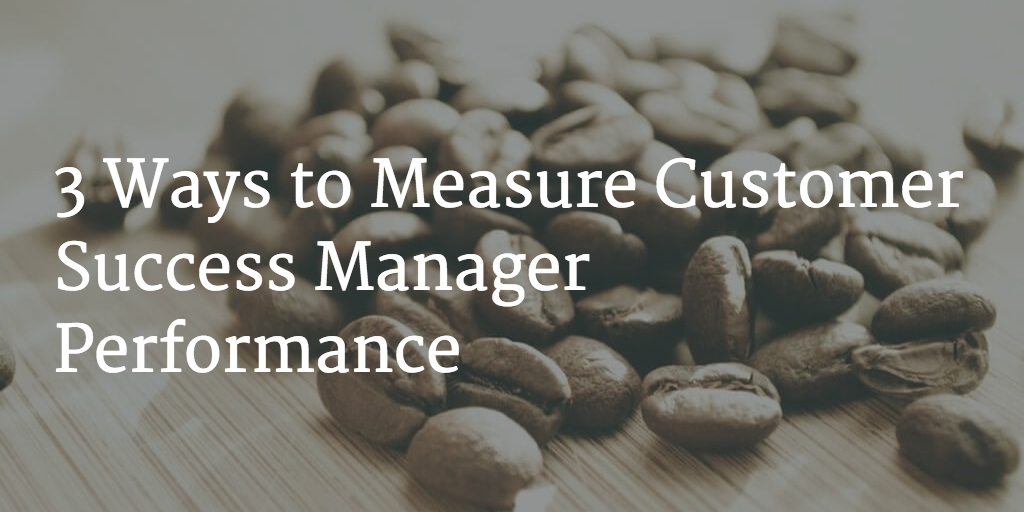As with most jobs, there may be many different ways to measure the performance of a Customer Success Manager (CSM) It’s a complex job encompassing many different activities and working with many different kinds of customers. The biggest variable is probably the maturity of your company, which will dictate the specific role you’ll be playing.
Regardless of your specific role, retention rate or renewal rate – or conversely churn rate – is likely to be a key part of your measurement. After all, the reason the Customer Success organization came into being, and exists to this day, is to retain customers and revenue.
For the sake of this article, we’ll simplify the concept of measuring retention and churn to this basic statement: “Of all the customers who could have churned in a particular time period, what percentage did?”
Variables in Measuring Customer Retention
Exactly how churn and retention are measured at your company is completely dependent on the specifics of, well, your company, so I won’t explore that here. What is worth exploring, however, are the variables that affect how you think about retention for your customers.
- Length of contract
- Monthly – this basically means that there is no term in the contract and that the customer can leave at any time, usually with 30 days’ written notice. As a CSM in this situation, every customer is theoretically at risk of churn every month. CSMs won’t have the luxury of paying more attention to their customers as they approach their renewal date because every month is a renewal without the contract signature. Your CSMs will obviously have to prioritize your customers in some way, but renewal date won’t be one of those factors.
- Quarterly/Annual/Multi-year – these are all essentially the same conceptually. There is a renewal date and the only time the customer can technically get out of their contract is on that renewal date. Obviously customers can stop using your product any time they wish, but, in this situation where there is a specified contract term, they are contractually obligated to you (and you to them) until the renewal date passes without a signed contract.In the case of auto-renewals, the customer typically has to notify the vendor 30 days or more before the renewal date in order to escape the contract. In this scenario, the CSM will use the renewal date as a very specific part of their prioritization process. Given two customers of equal value, the higher priority will go to the one with the nearest renewal date.
- Extensibility of your product – there’s a term in the technology industry called “land and expand”. This refers to the opportunity for a customer to start small with your product and then expand their use of it over time. The expansion could be as simple as buying additional licenses for new users (usually called upsell) or as complex as selling your entire solution to a new division of the same company which is often referred to as cross-sell. And between those two ends of the spectrum would be selling additional products or features to your original buyer.
The bottom line is that most software products will have additional functionality that can be added for additional cost. Upsell and cross-sell will obviously raise the overall contract value for any given customer. The reason this is important is that you are likely to measured on the overall growth of the contract value across your customers.
This is sometimes called net retention and it’s the reason that some companies will have a net retention greater than 100%. The healthiest SaaS companies will have a net retention in the 110% to 120% range. This is accomplished by adding more revenue to your install base contracts through upsell and cross-sell than you lose through churn.
CSMs Influence Renewals and Upsells
Even if you don’t ask your CSMs to execute the transactions described above – renewals, upsell, and cross-sell – they have significant influence over these transactions (and leading-up to them). Who does the actual execution just depends on how you’ve designed your Customer Success organization and how it operates as part of your overall organization.
In more mature companies, the Customer Success team, which may get renamed Account Management or something more salesy, will often be focused primarily on renewals and contract growth. At earlier stage companies, the focus is more likely to be on mitigating churn.
But, whether you are asked to negotiate and execute the contracts or not, your Customer Success organization – and your frontline CSMs – will likely get measured on the overall growth of your install base.
If you boil it all the way down to its essence, it’s all about making sure your customers are successful. And successful customers do two things – 1) they renew their contracts and 2) they buy more stuff from you.
Common Methods of Measuring CSM Performance
There are other common ways of measuring CSMs but they are basically proxies for retention. Let’s walk through a few of these:
- Customer Satisfaction score – also known as CSAT. This will almost certainly be part of the way you measure the health of your customer, but it also might be part of how you are measured. The methodology here is usually surveys. Surveys can be done via email, phone, or can be embedded in your product.There are many different scoring methodologies but the one receiving the most favor these days is NPS (Net Promoter Score). NPS relies on a simple question, often referred to as “the ultimate question”.It’s worded this way – “How likely are you to recommend to a friend or colleague”. The scale is 0-10, 10 being most likely. Scores are broken down by Promoters (9-10), Passives (7-8), and Detractors (0-6).The formula for overall score is (% of Promoters – % of Detractors). Let’s say you get 10 responses to an NPS survey. Three responses are 9s or 10s, five are 7s or 8s, and two are 0-6. The resulting NPS score is 10 which is derived by subtracting the % of Detractors (20%) from the % of Promoters (30%). Thus the term “Net Promoter Score”.It’s not the only way to measure customer satisfaction but it’s very common and there’s a very good chance it will be part of your world and could be a component of your compensation or performance evaluation.
- Customer Health Score – this is a derived score that is intended to indicate how healthy (and loyal) your customers are. It can consist of a number of different elements that together make up the picture of overall health for your customers. The list of aspects of overall customer health is nearly endless but some of the common ones are:
- NPS score – I just covered this (see above)
- Customer Support – how often do they call Support, how long are tickets open, what severity are they, etc.
- References – are your customers doing references, how often, how many
- Community engagement – if you have a Community, do your customers go there and what do they do when they are there
- Marketing engagement – how do they engage with your Marketing campaigns – do they open your emails, click on the links, attend your webinars, etc.
- Invoice history – do they pay their bills on time
- Transaction history – have they renewed and how often, have they bought more product from you, what is their contract value compared to their original contract
- Marketing participation – do they speak on your behalf, are they doing case studies, video testimonials, participate in your customer summitHonestly, this list can go on and on. Just remember that this is an attempt to create a score that will be predictive of both renewal and upsell. It’s a way to measure success with a group of customers in a shorter timeframe than many contract terms. You might be measured on the improvement in your customer’s health scores month over month as opposed to waiting for 12 months to see what your annual retention rate is.
- Activities and Usage – Honestly, this is probably not the best way to measure anyone, but the fact is… it’s fairly common. The assumption is that certain activities lead to customers getting value from your product and then renewing their contracts. This might include the number of calls you have with customers, the number of onsite visits, consistently doing Quarterly Business Reviews (QBRs), and of course that actual usage of the product by the customer. All good things if done well and theoretically leading to customer retention, but just know this may not paint the entire picture.
Measuring CSM Performance: Individual vs. Group
One last comment on team vs. individual measurements in Customer Success. You will see both practiced successfully. If each CSM carries a very specific book of business, it’s perfectly legitimate to measure them on the renewal rates, or health scores, for that set of customers. It’s also reasonable and common to create team goals and measure the whole team against the combined numbers.
In fact, this method can enhance collaboration and remove the impression that the Customer Success team operates like a Sales team – individual territories and individual results. Either can work, they just work differently.
Ultimately though, CSMs should be measured as an individual even if you are on a team goal, because all links in the chain are not of equal strength and your individual performance will drive your salary and promotion opportunities even if the team performance drives your variable compensation.

